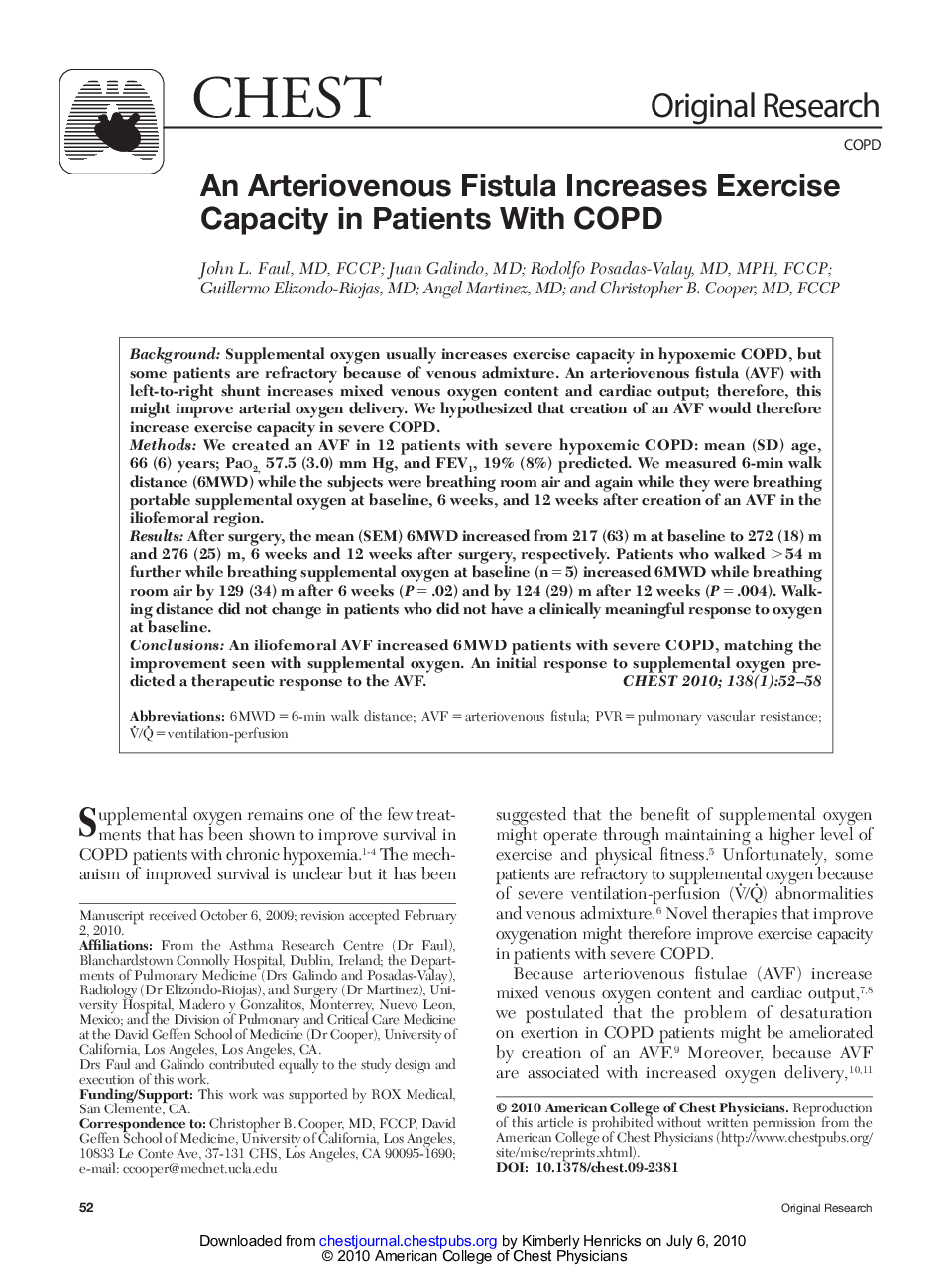| Article ID | Journal | Published Year | Pages | File Type |
|---|---|---|---|---|
| 2903673 | Chest | 2010 | 7 Pages |
BackgroundSupplemental oxygen usually increases exercise capacity in hypoxemic COPD, but some patients are refractory because of venous admixture. An arteriovenous fistula (AVF) with left-to-right shunt increases mixed venous oxygen content and cardiac output; therefore, this might improve arterial oxygen delivery. We hypothesized that creation of an AVF would therefore increase exercise capacity in severe COPD.MethodsWe created an AVF in 12 patients with severe hypoxemic COPD: mean (SD) age, 66 (6) years; Pao2, 57.5 (3.0) mm Hg, and FEV1, 19% (8%) predicted. We measured 6-min walk distance (6MWD) while the subjects were breathing room air and again while they were breathing portable supplemental oxygen at baseline, 6 weeks, and 12 weeks after creation of an AVF in the iliofemoral region.ResultsAfter surgery, the mean (SEM) 6MWD increased from 217 (63) m at baseline to 272 (18) m and 276 (25) m, 6 weeks and 12 weeks after surgery, respectively. Patients who walked > 54 m further while breathing supplemental oxygen at baseline (n = 5) increased 6MWD while breathing room air by 129 (34) m after 6 weeks (P = .02) and by 124 (29) m after 12 weeks (P = .004). Walking distance did not change in patients who did not have a clinically meaningful response to oxygen at baseline.ConclusionsAn iliofemoral AVF increased 6MWD patients with severe COPD, matching the improvement seen with supplemental oxygen. An initial response to supplemental oxygen predicted a therapeutic response to the AVF.
